Société Céramique Maastricht antique polychrome (with lustre) "Timor" plate 22 cm
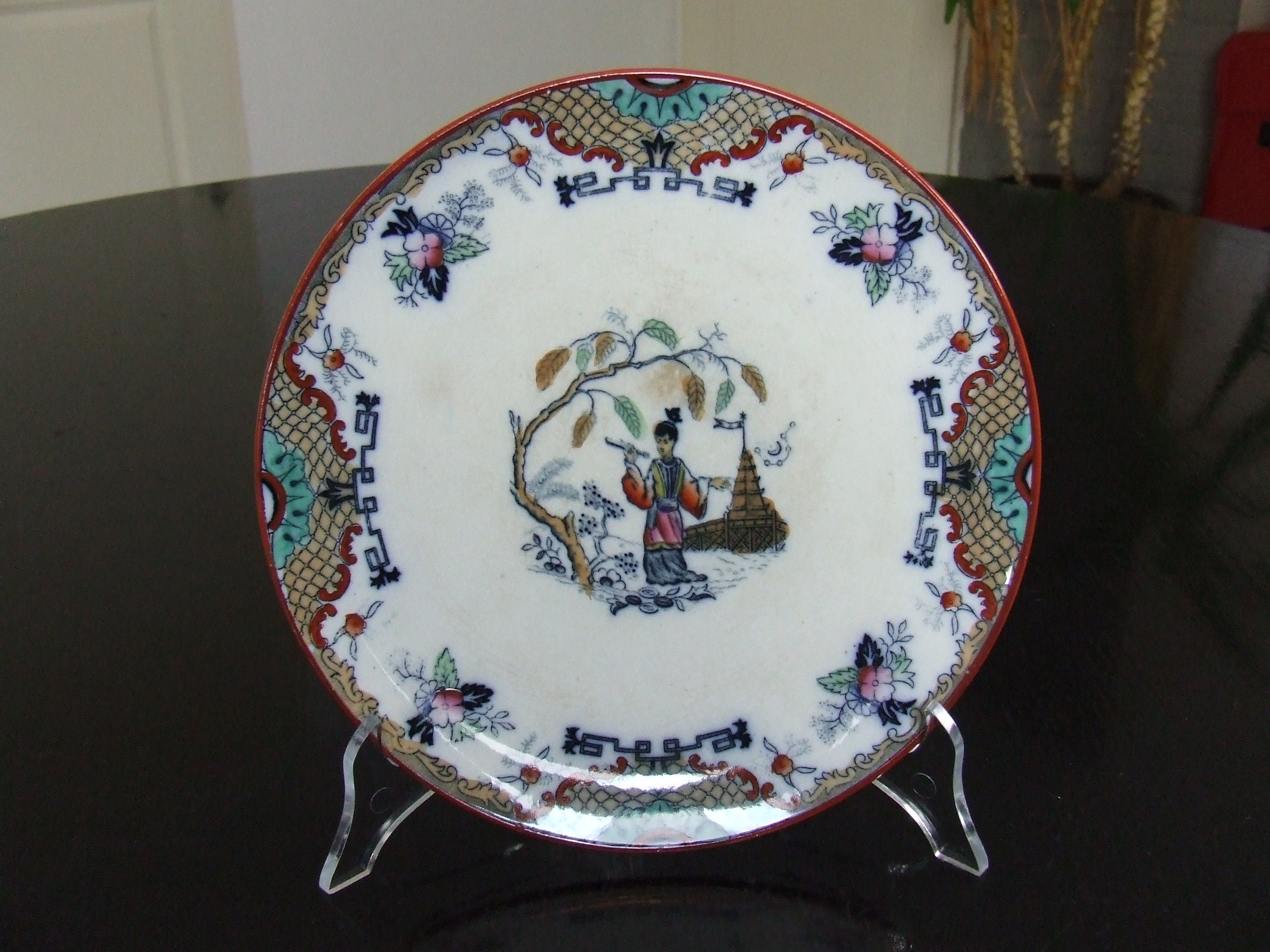

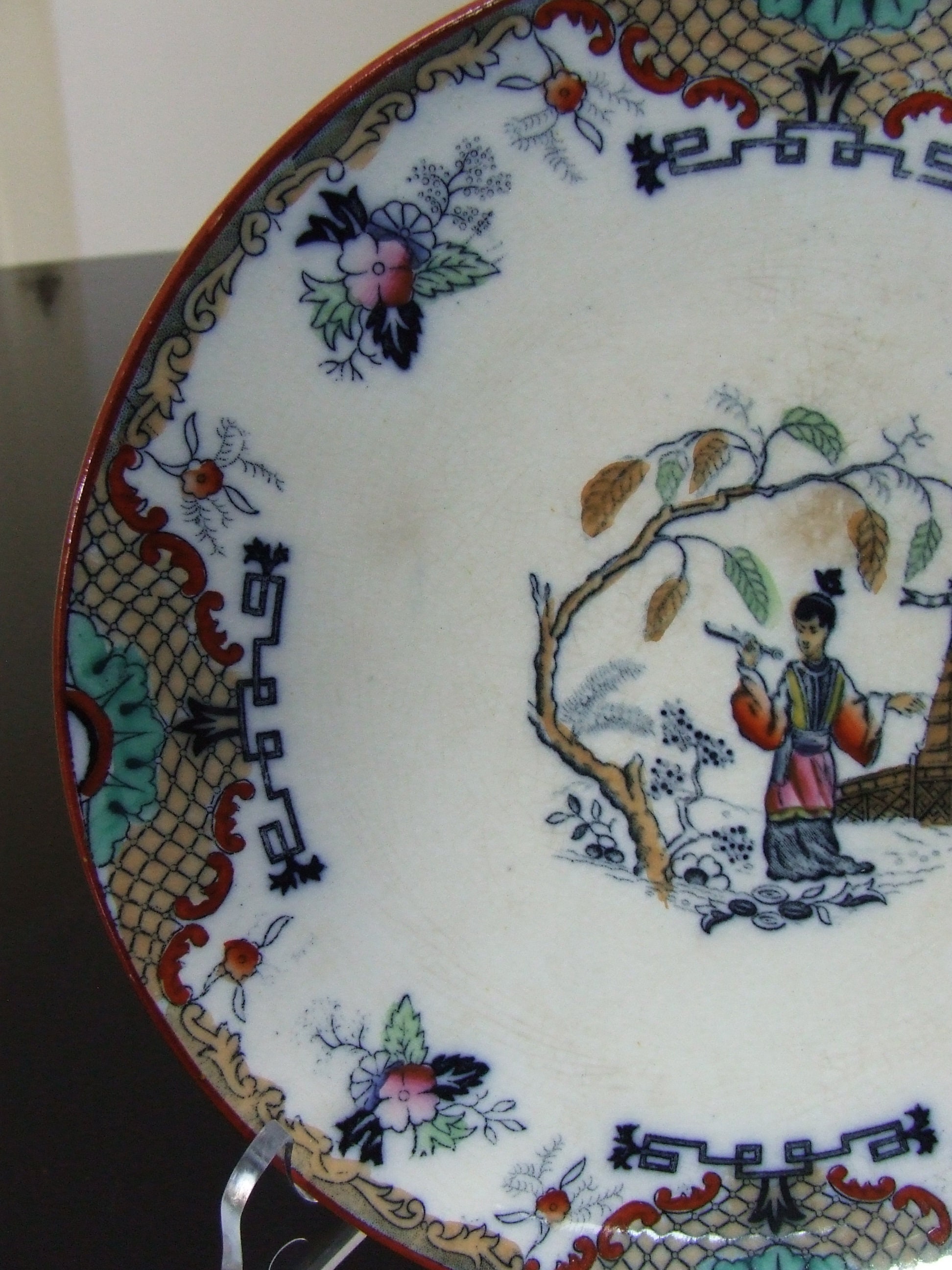

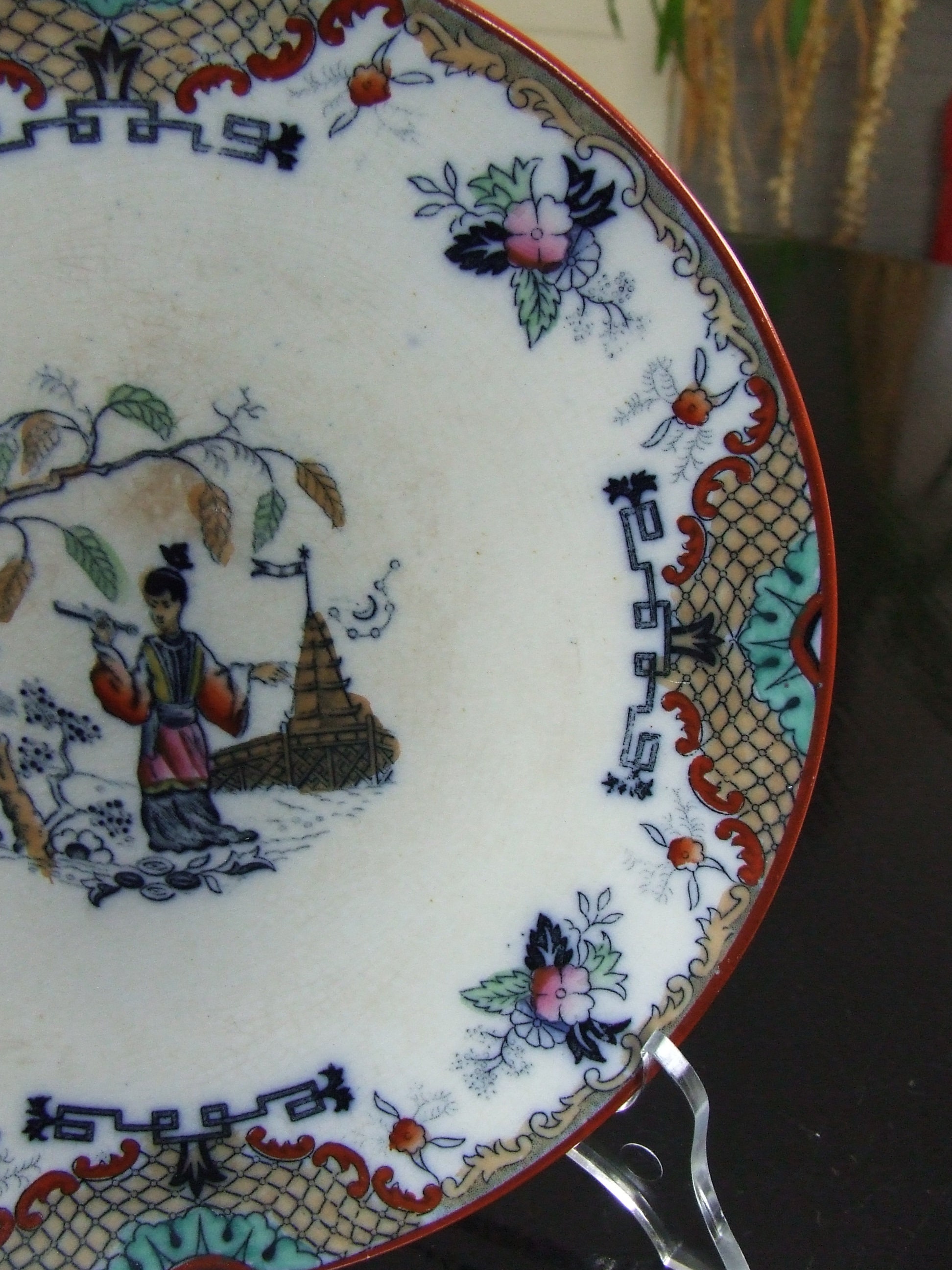

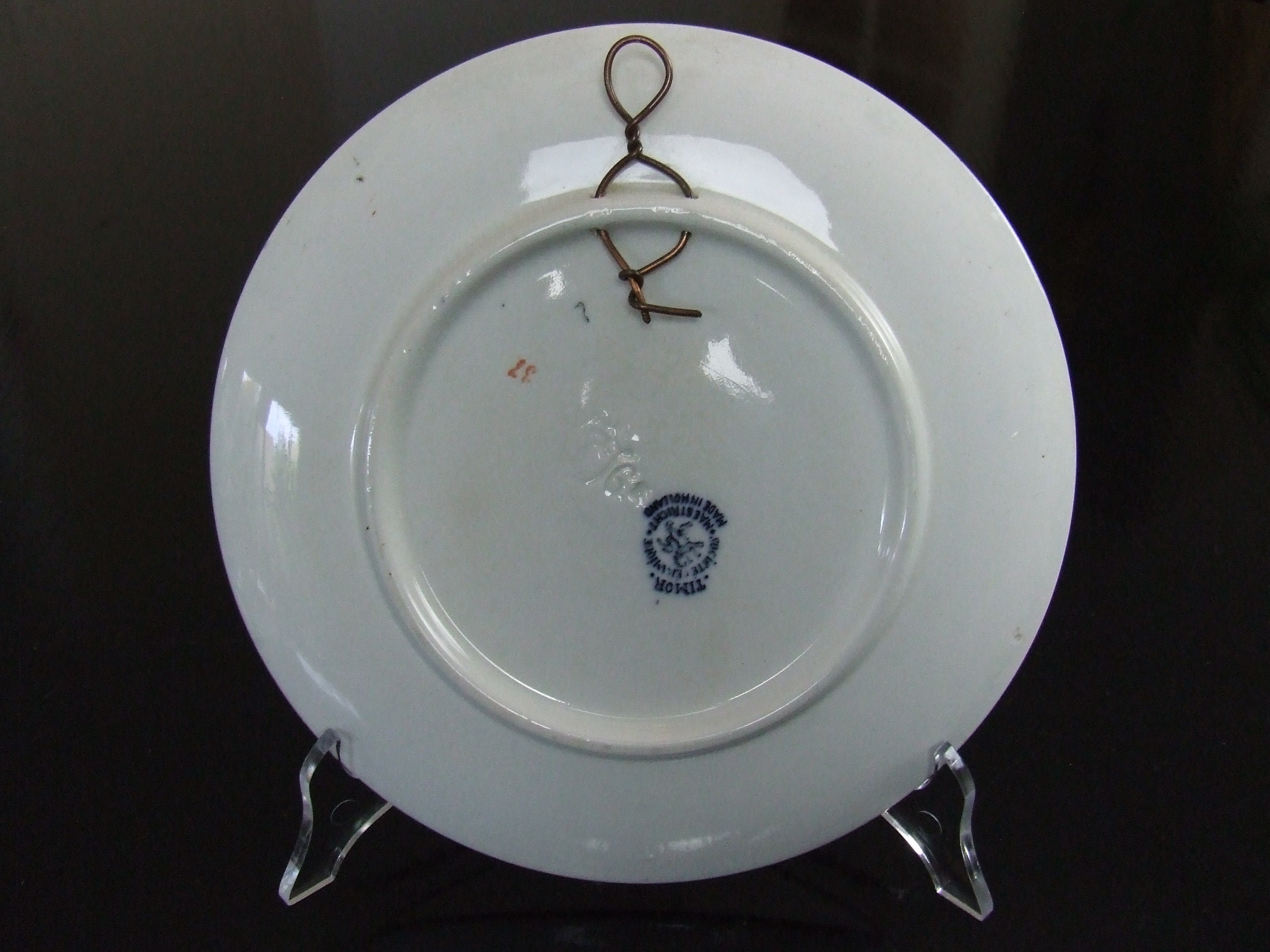
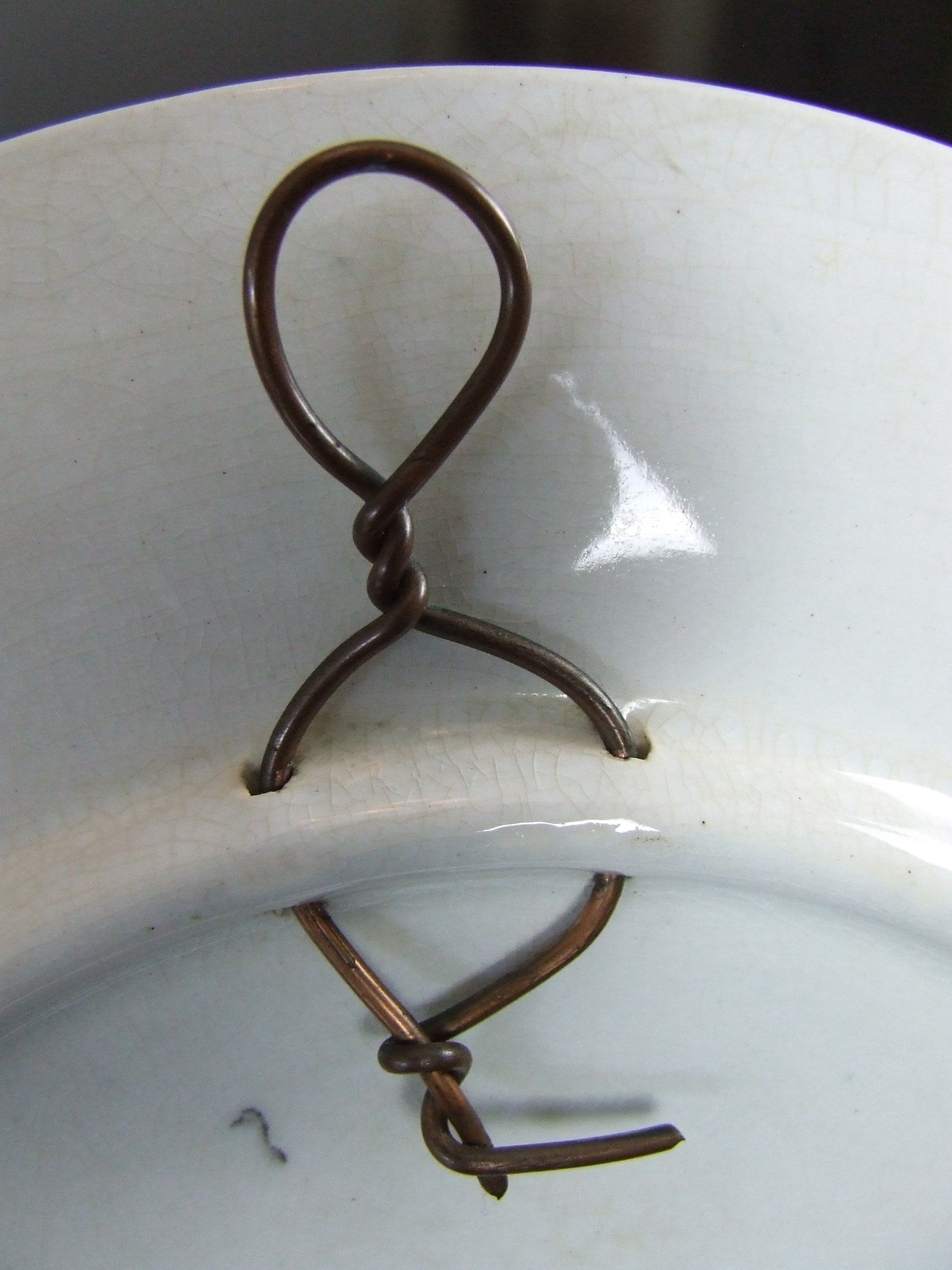

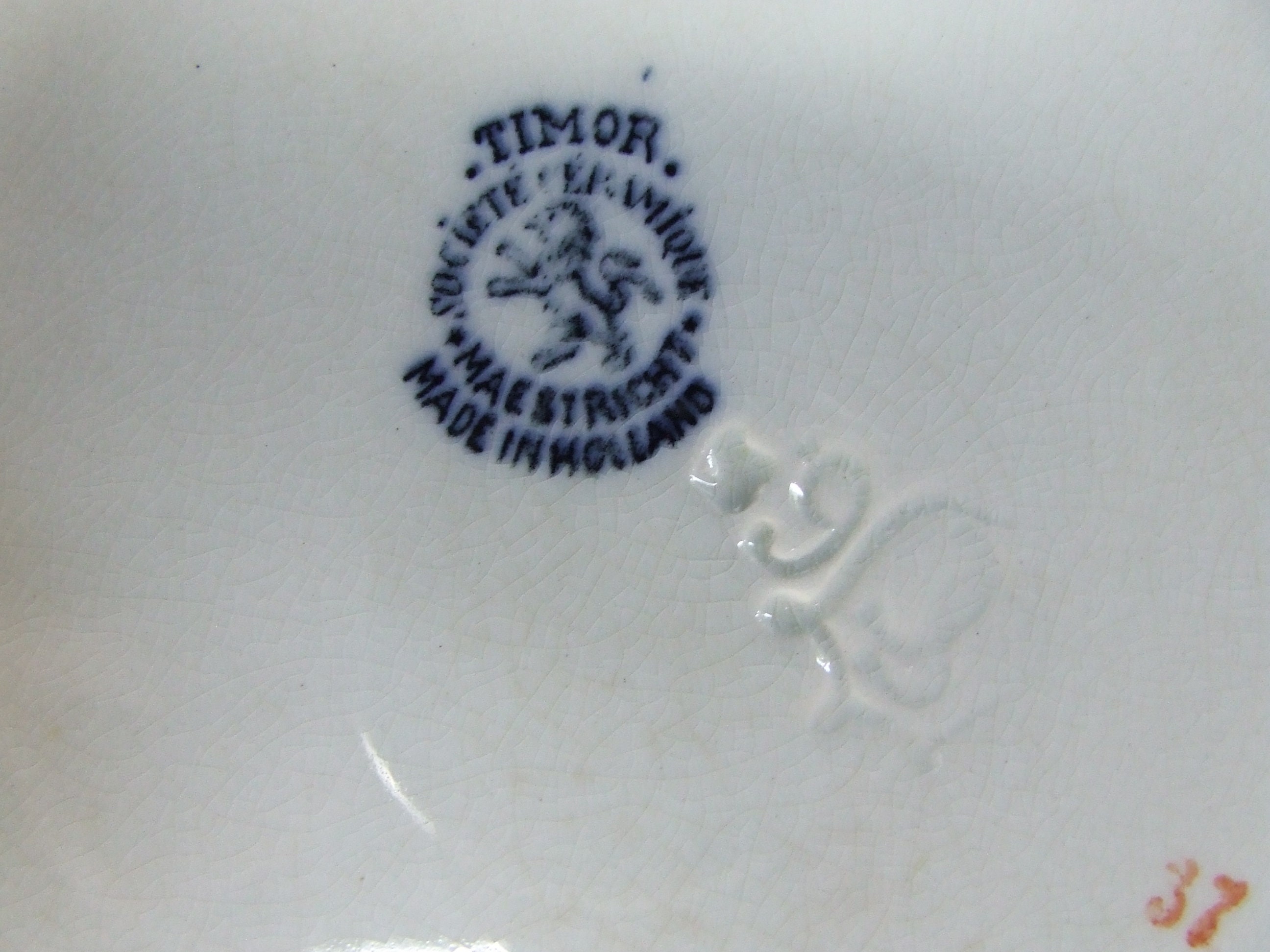
$22.06 $24.51
Medium sized (22 cm) polychrome "Timor" plate made around 1900 by Société Céramique in Maastricht, the Netherlands. This is originally a dinnerware plate that has been turned into a decorative wall plate. The plate is transfer printed, supplemented with handpainted colours. The dark blue outlines and solid colours in the decoration are transfer printed (underglaze), while the other colours (red-brown, yellow-brown, green, yellow, pink and light blue) have been handpainted (both underglaze and overglaze). The yellow-brown and green colours have a luster glaze, which means they have a metallic shine to them which gives a very nice and luxurious effect.
The plate shows an oriental decor called "Timor", which was used on high-end dinnerware produced between 1880 and 1930 for the Dutch East Indies market, the Dutch colony that later became Indonesia. A very similar "Timor" design was produced in the same years by Petrus Regout, the main competitor of Société Céramique, also from Maastricht. The "Timor" decor was used on a full range of tableware / dinnerware, which makes the decor very collectible.
The backside of the plate is signed with a blue underglaze "Société Céramique Maestricht - Made in Holland" mark, which also includes the decor name (Timor). There is also a large impressed mark of Société Céramique (the letters S and C intertwined within a shield), which was only used for a short period around 1900. Next to the mark we see a large impressed number 6 and an undefined impressed symbol. Finally we can also find on the backside a stamped number 7 in blue (underglaze) and a stamped number 37 in red (overglaze). These are probably quality control numbers from the factory.
To turn this utilitarian dinner plate into a decorative wall plate, two holes were drilled through its footring, through which a thick copper wire was bended. This was probably professionally done.
A very decorative plate, which will look great on the wall, but also nice for on the table or upright in a plate stand!
Made by: Société Céramique
Place of manufacture: Maastricht, the Netherlands
Year of manufacture: around 1900
Method of decoration: transfer print (underglaze), with additional handpainted colours
Size: diameter: 22 cm, depth / height: 2,1 cm
Weight: 360 g
Condition: there is a patch of underglaze age related yellowing (a proces called "buttering" in Dutch) on the frontside centre and the frontside shows some stained crazing. The backside has only light crazing. The glaze on both sides still feels smooth, and the overglaze painted colours are still quite strong and little worn. The rim of the plate has a small damage or baking flaw (see picture), which is not very noticable from the frontside. It can easily be retouched with a little bit of red paint if desired. On the backside of the plate two small kiln marks can be seen, from the stilts where the plate was resting upon when it was baked in the oven. This is not a defect but part of the normal production process.
Additional pictures can be provided if required.
----------------------------------------------------------------------
About Société Céramique:
This factory was based in Maastricht, in the southernmost point of the Netherlands. It produced from 1863 to 1958 decorative ceramics and dinnerware in a variety of styles. Most often the decoration was applied by transfer print: a method whereby a monochrome print on paper (from an engraved copper or steel plate) was transferred by pressing it onto the ceramic piece. This transfer process was done by hand. Although transfer printed items lack the vibrancy of handpainted items, the process does allow for the production of beautiful, detailed and decorative items, which would be very expensive or impossible to produce by handpainting. The Delftware (blue and white Delft blue) produced by Société Céramique and other Maastricht factories has a darker blue than the Delftware of other factories in the Netherlands. In 1958 Société Céramique merged with Petrus Regout (also from Maastricht) to form Royal Sphinx, which continued to produce Delftware until 1969.
----------------------------------------------------------------------
This beautiful item will be carefully packed and send by tracked and insured mail.
If you buy multiple items from our shop in one purchase, we will try to combine the items into one parcel. Any excess shipping costs will be refunded.
If you are not satisfied with your purchase, you may contact us within 14 days from the delivery date to return the item. If the item is returned in its original condition, we will issue a refund for the total purchase price of the item.
Buyers are responsible for any tariffs, duties and fees that may apply. Decorative ceramics imported to the USA from the Netherlands (European Union) are subject to an import duty of 15% of the item value.
Shipping from The Netherlands
Processing time
1-2 business days
Customs and import taxes
Buyers are responsible for any customs and import taxes that may apply. I'm not responsible for delays due to customs.
Payment Options
Returns & Exchanges
I gladly accept returns
Just contact me within: 14 days of delivery
Ship items back to me within: 30 days of delivery
I don't accept exchanges or cancellations
But please contact me if you have any problems with your order.
Conditions of return
Buyers are responsible for return shipping costs. If the item is not returned in its original condition, the buyer is responsible for any loss in value.
Frequently Asked Questions
What are your shipping times?
We will send off your order within one or two working days. We use the standard parcel service of PostNL to ship our parcels. You can find their estimated delivery times per country here (shortened link to pdf download of PostNL): https://bit.ly/3ZHTMJ9. In the fourth column (parcels) you can find the delivery times of the standard service (in estimated business / working days). Please keep in mind that customs / import procedures in non-EU countries can sometimes add an extra week (or even two weeks) to the delivery times.
For shipments to the USA we use FedEx Economy delivery, as PostNL temporarily does not deliver to the USA due to changes in import duties. Estimated delivery time is four days after shipping, if all goes well at customs.
How do you pack your items, will my item arrive safely?
Broken ceramics is a thing we do not like! Not only is it a waste of time and money, but it also (often) means the end for a rare and unique item, which was treasured and cared for by their previous owners. So we really want to avoid any damages during shipping!
We have lots of experience of shipping ceramics, and we have seen what works and what does not work to protect ceramics during transit. If we ship multiple items in one package, each item is carefully wrapped and kept well seperated from the other items. We use large boxes, with plenty of buffer all around the items, so the packages can withstand a lot of abuse. All our packages should be able to cope with a 1,5 m drop without the items getting damaged.
Do you take care of the environment?
Yes we do. We re-use packaging materials as much as possible, which means we rarely need to buy new materials for our packaging. Only foam peanuts are sometimes bought by us, in which case we prefer to use green starch based peanuts which are fully biodegradable, non-toxic and water-soluble.
Each year, we calculate the greenhouse gas emissions in CO2-equivalents caused by our shipping. We multiply that amount by 200% and then offset it in certified CO2 compensation projects based on tree planting / reforestation in various parts of the world. So far, we have offset 35,5 tonnes of CO2 emissions in projects in Bolivia and Borneo (Indonesia). See https://treesforall.nl/en/projects/ for more information on the projects.
How should I take care of my Dutch ceramics?
First of all, don't let them fall! Always handle them in a mindful way and put them in spots where they cannot be accidentally bumped over when cleaning or vacuuming. Some people put some (clean) sand in vases to make them more stable.
Second, don't clean them too often! Underglaze painted Gouda and Delftware can be perfectly cleaned with water if necessary, but often just dusting them off or polishing them up a bit with a soft dry cloth is enough. Overglaze painted items should not be cleaned too often.
The colours of ceramics do not fade in sunlight, so you can put them in bright spots where they look good. But do avoid large temperature differences, which will cause increased crazing in many Delftware and also Gouda type pieces.